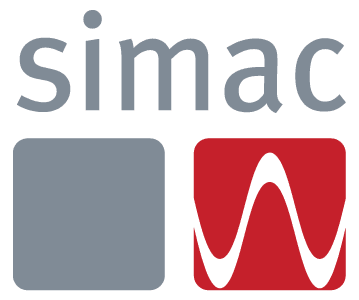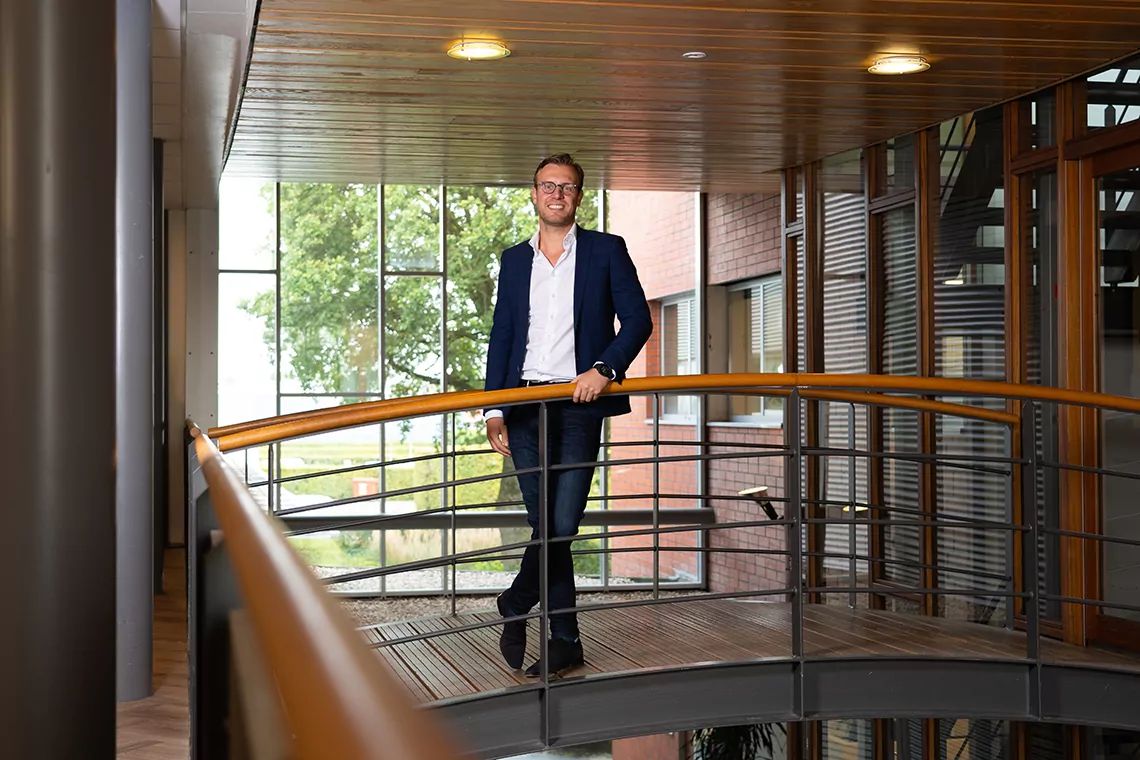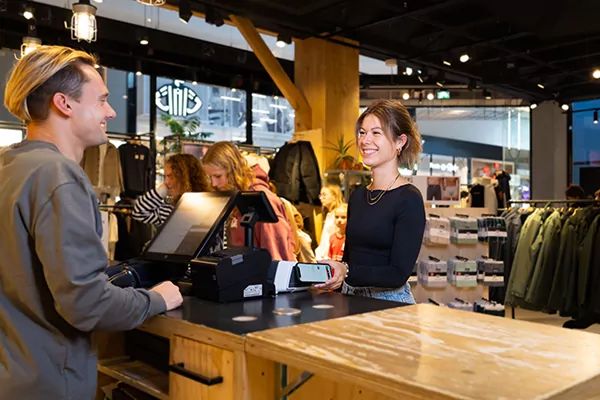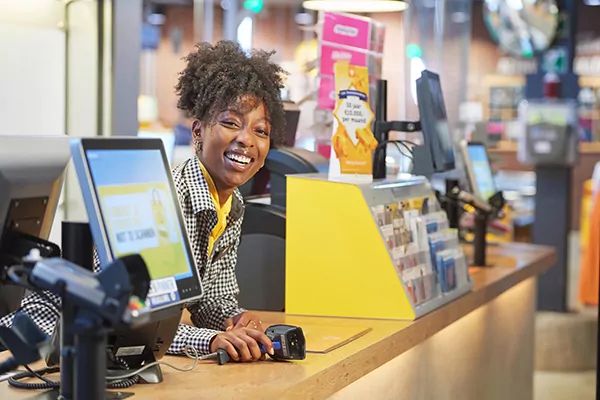What does the store of the future look like? The answer to the question is different for every retailer. Simac thinks along with customers about developments in retail and technology and the way in which they can lay the foundation for the store of the future with targeted IT investments. Jonathan van Raaij, product marketing manager store at Simac IT NL: “Customers expect a proactive attitude from us. We are happy to oblige.”
Imagine walking through a store with your phone and scanning the surroundings, with the screen lighting up when your favorite product comes into view. Or sitting on the couch with your VR glasses on and virtually browsing through that same store to then put the product in your virtual shopping basket. These are applications of AR and VR technology that are already possible, but seem far away for many retailers.
"Or consider the metaverse, a virtual universe where you can create a whole new store and thus a whole new sales channel. In games like Fortnite, it is already possible to buy virtual products that you can use in the game. I know families where children prefer to spend their birthday money in such a virtual world rather than in the real world," says Jonathan.
Shop of the future
The above future scenarios are part of Simac's long-term vision for the store of the future. Jonathan started a year ago at Simac IT NL as a product marketing manager store with the formulation of that vision as one of his tasks. For this he of course used his own knowledge and experience as a consultant at Boer & Croon and chairman of the expert session Phygital Commerce of ShoppingTomorrow, but also the input from technology partners, market analysts and Simac's own experts. “In recent months we have presented this vision to various retail customers of Simac. They reacted positively surprised. Often with the remark that they did not know that Simac was thinking along with customers to this extent about developments in retail.
That last part was exactly the intention. Simac is an IT partner with strong roots in retail and a very long track record when it comes to implementing, managing, and maintaining IT solutions.
“When a retailer runs into a problem or wants to implement a new technology, we can integrate that solution into the existing landscape, roll it out and manage it. We receive a lot of appreciation for this from our retail customers. But what those same customers also want, is a partner who proactively thinks along, points out future developments and indicates what those mean for the retail's IT landscape. It is my job to clarify where we are already strong, but especially to tell about the services that we are developing to strengthen precisely that proactive approach. In addition, I also focus on further developing and improving our existing services and adding innovative, concrete solutions.”}
America Today & MS Mode
Whoever wants to integrate their online and offline channels to introduce concepts such as click & collect or click & reserve, cannot do without a modern checkout system.
Read the articleStore consultancy
Simac's retail portfolio consists of four parts: store consultancy, installation & rollout, Simac Retail Support Services, and store technology refreshment. Improvement is always possible in each part. For instance, Simac is working on expanding the self-service portal for Simac Retail Support Services, so customers can use it to submit and track change requests. In addition, Simac is constantly working on a smarter approach to cause even less inconvenience on the shop floor during the installation & rollout of new technologies. “But the focus is also on the other two parts,” says Jonathan.
“Store technology refreshment stems from our services in the field of Simac Retail Support Services. We know what the customer's IT landscape looks like and what the developments in the market are. On this basis, we can advise the customer about future investments in the IT landscape. By improving our services in this area, we can add more and more value.”
Simac aims to play a more prominent role in the development of new IT roadmaps for stores when it comes to store consultancy. "No, we are not going to take the place of the retailer. They know best how to reach and serve their customers and what their strategy should look like. However, at some point, this strategy needs to be translated into new store concepts, including the new technologies that accompany them. This is a process usually driven by the business, with the IT team only being brought in at the very end for execution and implementation. That's the moment when choices have often already been made that are difficult to implement. Choices for technical solutions that may not be secure and future-proof, for example. We would like to be involved earlier so that we can contribute to shaping these technical solutions. So that you don't invest in hundreds of PDAs that turn out to be unsuitable for new applications in three years. That's what we want to excel in."
Employee experience
Technological advancements extend beyond just the network and cash register systems in the store. A secure network is increasingly viewed as a type of utility service that must always operate smoothly. Cash register systems, including self-checkout registers, remain essential for facilitating transactions and generating revenue. Moreover, there is a growing focus on improving the experience for both employees and customers. "Finding and retaining store staff is becoming increasingly difficult. The question is whether you have them restock shelves or provide customer advice. Effective tools can make work more efficient and enjoyable by leaving more time for customer assistance. Consider PDAs with special apps for communication and task management, as well as electronic shelf labels. The latest generation of shelf labels, for example, come equipped with lights that assist in order picking on the store floor. As an order picker moves through the store, red lights indicate which products to pick, thus saving time that would otherwise be spent searching for the right products. This also minimizes disturbance to customers," Jonathan understands.
Jumbo & Simac
More than ever, the focus is on the X of Xperience: how satisfied are the store employees of Jumbo with the services provided? With XLA, Jumbo and Simac put the IT customer at the center.
Read moreWe already know that technology helps to improve customer experience. Think of screens that offer custom content, but also new payment solutions like SoftPOS applications that turn PDAs into mobile cash registers. “That customer experience doesn't have to be exuberant, but it does have to fit into your strategy as a retailer. Customers have a completely different expectation when they walk into a discounter like Aldi or a department store like Bijenkorf”, explains Jonathan
“In addition, we want to focus more on in-store analytics. Our technology partners, such as Cisco, offer all kinds of hardware and software solutions with which we can collect a wealth of data. Data about the way customers move through the store, how they feel and behave and in front of which shelves they stand. Analysis of this data provides retailers with new insights that can improve employee and customer experience and increase their revenue.”
Sustainability Dashboard
The first concrete results of the new approach are already visible. Together with its partners, Simac works on total solutions, where the partners provide the technology and Simac provides the additional services. An example of this is Connectivity-as-a-Service, a service model where retailers can purchase connectivity in the form of a total package of network hardware and services.
Another example is the expansion of the Simac Remote Management Suite with a sustainability dashboard. “With this we can measure and reduce energy consumption in stores. Customers can take measures themselves based on the insights to reduce energy consumption, but it is much more efficient to have this done by Simac. Based on different parameters, we can switch off certain systems, taking into account opening hours and the time windows in which patches are installed and updates take place. In this way, we can contribute to the sustainability objectives with relatively little effort and save thousands of euros annually.” Retailers can expect even more in the coming time.
“We are getting more and more technology in our stores, especially to support employees and improve customer experience,” says Jonathan. “That's why we advise mapping out both the employee and customer journey. What challenges do they face? What needs arise during those journeys? And with which technologies could you fill those in? Then look at which solutions best align with your strategy and your formula. And use that as a foundation to be able to develop step by step towards the store of the future.”







